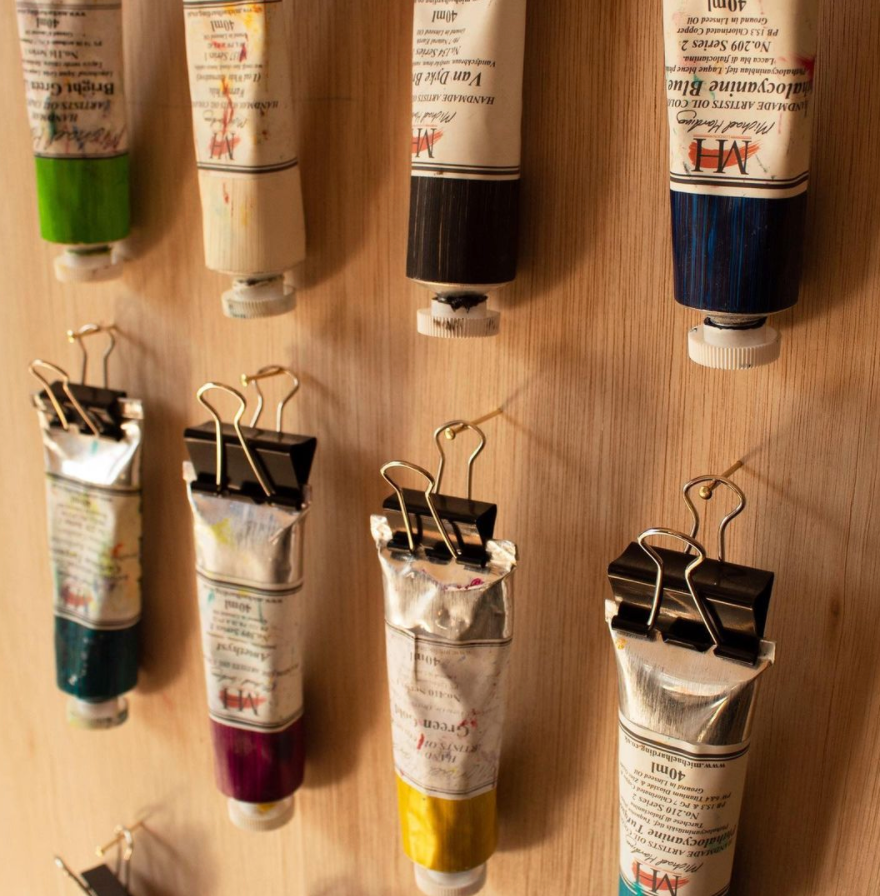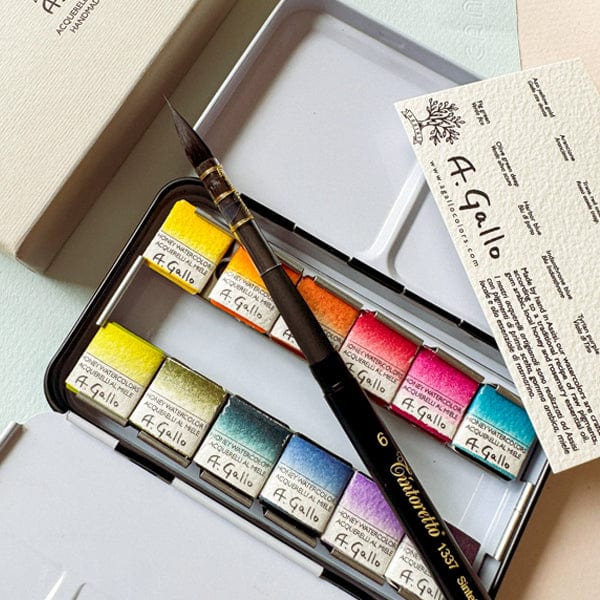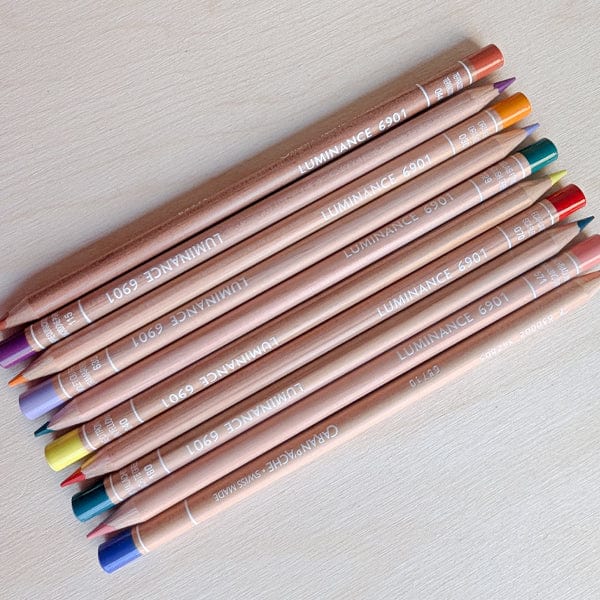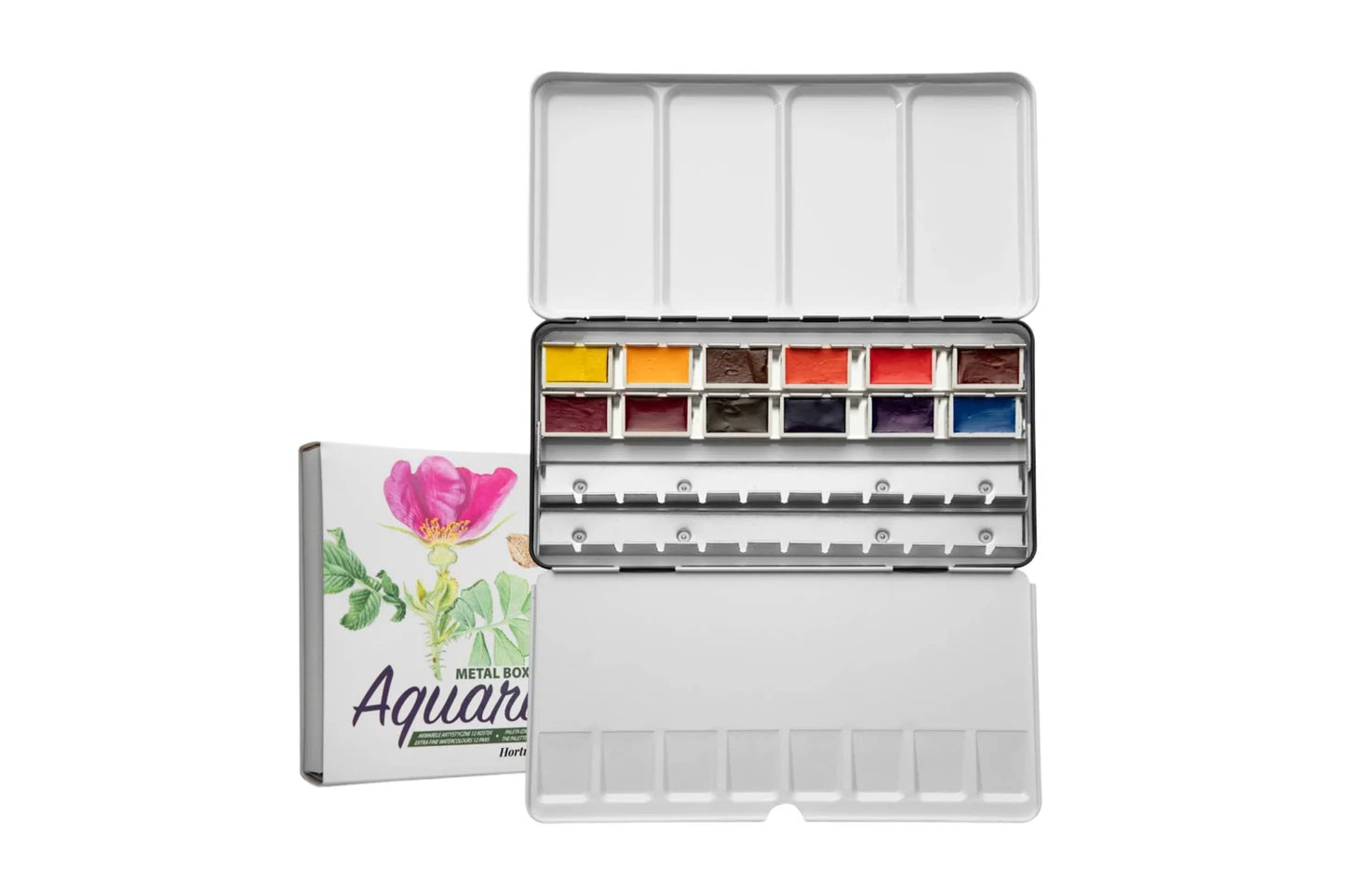
We understand that oil paints are an expensive medium and that often times it's not possible to complete an oil painting in one sitting. So we are going to break down how to store your oil paints when you're actively using them and when you are not to get the most out of your paints.
Methods to store oil paints when you are actively using:
- cover your palette in plastic wrap and store in the freezer (must be at -20°C for the linseed oil to freeze)
- transfer your paints in an air-tight container
- use a glass palette instead of a plastic or wooden one (moisture will stay in the paints on a glass surface longer than plastic or wood)
- gently wrap your paint in aluminum foil and wrap up the edges (be very careful not to apply pressure to the foil or flatten it)
- use clove oil to keep the paints wet and increase the drying time (need only a few drops!)
Methods to store oil paints when you are not actively using:
- hang them upside down using a binder clip at the end of the tube and stick them to a board (this lets the lighter weight oil to flow up and he heavier pigment to flow down to the cap)
- keep them in a dark and cool spot and avoid any direct sunlight (the heat can cause a lot of issues to the paint that you want to avoid)
- store them
- use a cabinet or storage box to neatly organize and store your oil paint
Other general tips:
- keep the cap of the tube clean of any build up
- carefully compress and roll the tubes from the end (use a tube wringer!)
- use a small piece of plastic wrap before screwing the cap on to avoid the paint drying inside the cap
- save your good tube caps just in case
We hope these tips help you prolong your precious tubes of paint paints. Remember, it's always best to start small and slow and then to build up. Keep on creating!
Photo from Michael Harding









Comments
Are there any other ways to store oil paints when not actively being used? (My oil paints are tube paints)